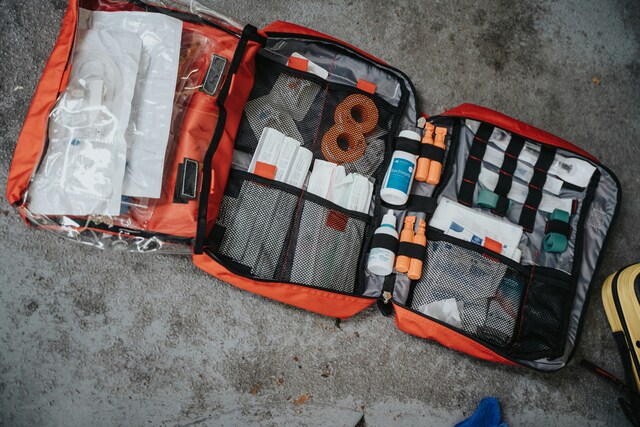Cyclones and storm surges can cause significant damage, but proper preparation can help reduce their impact.
Here’s a guide to ensuring your safety and protecting your home.
Find the safest room: Choose a strong, secure area away from large windows, such as a bathroom, walk-in wardrobe, or hallway. If you need to shelter in place, cover any windows in your safe room with a mattress or heavy blanket to protect against broken glass.
Use sandbags to prevent flooding: When placed correctly, sandbags can minimise flood damage.
Secure your home: Fasten cyclone screens, board up exposed windows and doors, and seal seep holes. You can also tape plastic sheeting to the inside of windows to help keep wind and rain out.
Park vehicles safely and prepare to evacuate: Fill your vehicle with fuel in case evacuation is necessary. Park in a sheltered area away from trees, powerlines, and waterways. If flooding is expected, leave early and check for road closures before traveling.
Secure loose items: Store or tie down garden furniture, toys, outdoor equipment, rubbish bins, chemicals, and poisons to prevent them from becoming dangerous projectiles in high winds.
Know how to disconnect utilities: Be prepared to shut off gas, electricity, solar power, and water services if instructed by authorities.
Prepare water supply and drains: Fill buckets and the bathtub with clean water in case of supply interruptions. Use sandbags to protect internal drains and toilets from sewage backflow.
Protect valuables and electronics: Raise fridges and freezers, move valuable items to higher ground, and safely store chemicals and poisons above flood levels.
Secure caravans and trailers: If possible, store or tie down caravans and trailers in a sheltered area to prevent them from being damaged or causing damage.
Trim tree branches: Remove any overhanging branches that could damage your roof during high winds.
Check on neighbours: Ensure that family, friends, and neighbours are aware of cyclone preparations. Offer assistance if possible, and don’t hesitate to ask for help.
Look after animals: Move livestock, horses, and pets to safe areas. Secure animals indoors or in a protected shelter with access to food and water. Have a pet emergency plan and kit ready.
WHAT TO INCLUDE IN YOUR EMERGENCY KIT:
Having a well-stocked emergency kit can make a critical difference during and after a cyclone. Here’s what you need:
First aid kit: Includes a first aid manual.
Important documents: Keep up-to-date copies in waterproof storage.
Sturdy gloves: Protect hands when handling debris.
Tissues and wipes: Pack enough for all household members.
Torch and spare batteries: Essential for power outages.
Battery-operated radio: Stay informed when power and internet are down.
Hand sanitiser and face masks: For hygiene and safety.
Drinking water: At least 10 litres per person for three days.
Non-perishable food: Plan meals for three days.
Can opener: Some tins still require manual opening.
Phone and portable charger: Keep devices charged for communication.
USB storage: Save digital copies of important documents and contacts.
Essential toiletries: Includes toilet paper, toothpaste, soap, shampoo, sunscreen, and insect repellent.






